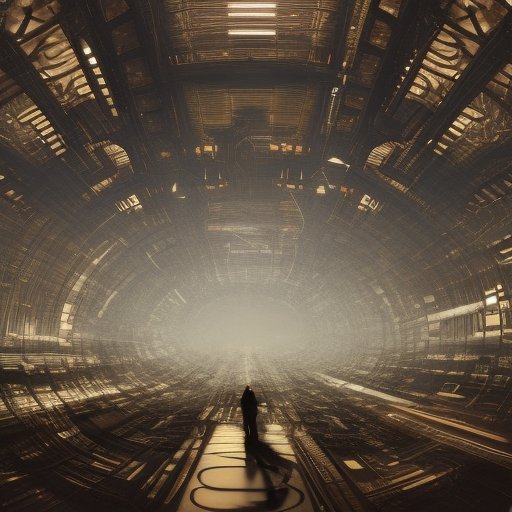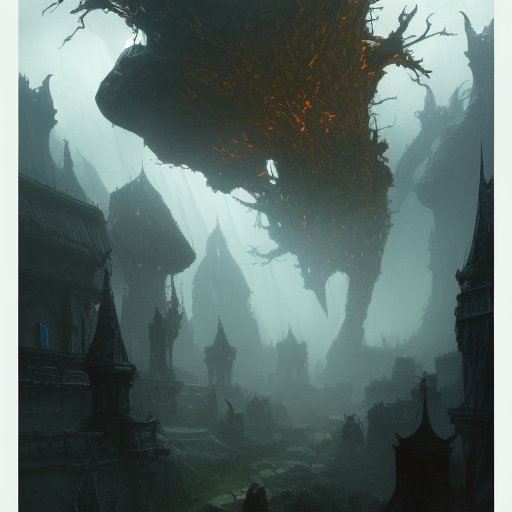
The idea of the Red Earth has been a sci-fi staple for decades. But how would this come to be? In this article, we explore the scientific possibility of an Earth that is red. We dive into the origins of the concept and its social and political implications. How could Earth’s ecosystem change? Can humans adapt to a red environment? Let’s delve into the exciting possibilities of a future where Earth is red.
I. Introduction
Ah, the Red Earth. A concept that’s been tantalizing sci-fi writers for decades. We all know about the Red Planet, Mars, but what about our very own home planet? Could Earth one day become red like its celestial neighbor?

Now, I know what you’re thinking. How could the Earth turn red? It’s blue and green, covered in vast oceans and lush forests. But hear me out. There are plenty of sci-fi works that have explored this idea, from novels like Red Mars to movies like Total Recall. It’s an intriguing hypothesis to explore, and one that’s worth diving into.
Of course, we can’t explore the idea of a Red Earth without taking a look at the science behind it. How could Earth become red? What would happen to the environment and the ecosystem? These are all important questions that we’ll be examining in this article.
But it’s not just the science that’s worth considering. A Red Earth would have significant social and political implications as well. How would society change? What would happen to world governments? These are all fascinating questions that we’ll be tackling as we explore this sci-fi concept.
So join me as we delve into the world of the Red Earth. It may be a hypothetical scenario, but it’s one that’s worth exploring. Who knows? With the way things are going, a Red Earth may not be as far-fetched as it seems.
II. History
Ah, the early days of sci-fi. A time when writers weren’t afraid to dream big and explore the far corners of the galaxy. It was during this time that the idea of a Red Earth first made an appearance in sci-fi literature. But where did this concept come from? Let’s take a trip down memory lane and explore some of the early works that introduced this idea.

One of the earliest examples of a Red Earth can be found in the novel “The War of the Worlds” by H.G. Wells, published in 1898. In the novel, a race of Martians invade Earth with their advanced technology and deadly weapons, leading to the destruction of society as we know it. But how does this tie into a Red Earth, you ask? Well, it’s revealed that the Martians have been using the blood of humans as a sort of fertilizer to create a new, red vegetation on Earth’s surface.
Another early example of a Red Earth can be found in the 1949 novel “The Martian Chronicles” by Ray Bradbury. In this novel, humans have colonized the planet Mars and have begun to terraform it, turning it into a new Earth. But a nuclear war on Earth sends the survivors fleeing to Mars, leading to the destruction of the planet’s ecosystem and turning the once-blue surface of Mars into a red wasteland.
As sci-fi literature continued to evolve, so too did the concept of a Red Earth. Novels like “Red Mars” and “2312” explored the possibility of humans terraforming Mars and turning it into a new Earth, while movies like “Total Recall” and “John Carter” imagined a future where the red planet was home to alien civilizations and advanced technology.
Throughout the years, the idea of a Red Earth has continued to captivate audiences and inspire writers to explore the possibilities of science fiction. And who knows? Perhaps one day this concept may become a reality. Until then, we’ll just have to continue exploring the vast expanse of the unknown.
III. The Science
The idea of a Red Earth may seem far-fetched, but science can do wonders, my friends. One theory is that Earth could turn red due to increased volcanic activity. When volcanoes erupt, they release gases like sulfur dioxide that can cause a cooling effect on the planet. Hey, science is full of surprises, isn’t it?

But wait, there’s more. Another theory suggests that a Red Earth could be the result of a collision with a large asteroid. The impact would cause massive amounts of debris to be thrown into the atmosphere, blocking out sunlight and giving the planet a red tint. Far-fetched, you say? Well, let me tell you, sci-fi has explored some wild ideas before, and they’re not always wrong.
Of course, any scenario that could turn Earth red would have severe environmental consequences. The volcanic scenario could lead to decreased sunlight and cooler temperatures, affecting plant life and agriculture. The asteroid scenario could cause widespread destruction and extinction events, potentially altering the course of Earth’s history.
But is a Red Earth a plausible scenario? Well, it’s not exactly likely, but anything is possible in the world of science and fiction. It’s important to remember that even the wildest concepts can lead to scientific discovery and exploration. Who knows, maybe one day we’ll be looking up at a Red Earth, and science fiction will have once again predicted the future.
IV. The Society
On a Red Earth, society would be vastly different. People would have to adjust to a new world, one where everything they knew has changed. The color red alone would have an enormous impact on their daily lives, as vibrant hues dominate every corner of their world.

The psychological effects of the Red Earth would be profound. Humans have an innate connection to their surroundings, and a world that’s completely different from what they’re used to could have significant consequences on the psyche. People would experience a sense of loss, nostalgia for the world that they once knew. But they would also have to adapt and find new ways of living.
The flora and fauna would be drastically different on a Red Earth, and as a result, the food and resources available to people would also change. Inhabitants would have to become much more self-sufficient to thrive in this new world. The scarcity of resources could create a more stratified society, with the wealthy living comfortably and the poor struggling to survive.
Moreover, the politics of a Red Earth would no doubt be affected. Governments would have to rethink their approaches to resource management, social welfare, and international relations. New alliances could emerge, and old ones could fall apart.
V. The Environment
The environment on a Red Earth would be drastically different from what we know today. The change in color alone would have significant ecological consequences. The planet would receive more sunlight and absorb more heat, leading to higher temperatures across the globe. The air would be drier, and the water scarce, making it difficult for most life forms to survive.

Plants, for example, would be unable to produce chlorophyll, the pigment that gives them their green color. Without chlorophyll, plants would be unable to produce food through photosynthesis, which would dramatically impact the entire food chain. Animals that rely on plants for food would struggle, leading to a mass extinction event.
But it’s not just the plants and animals that would be affected. The composition of the soil would also be different, and the microbes that live in the soil would be unable to adjust, further limiting the amount of plant life that could survive.
Aside from the difficulty of sustaining life, the atmospheric conditions on a Red Earth would be dangerous for humans. The increased solar radiation would damage human skin and cause dangerous health effects. The lack of water and plant life would make it difficult to grow food, and the air may not be breathable for most humans, leading to the need for artificial environments to survive.
VI. The Politics
Now, let’s speculate on what political outcomes we could expect if the Earth did turn red. Of course, there would be a lot of uncertainty and fear surrounding such a drastic change to our planet. Governments would be scrambling to figure out what to do, leading to potential conflict and hostility.

First of all, there would be a scramble for resources. With massive environmental changes taking place, access to things like food, water, and shelter could become scarce. This could lead to nations competing with each other for these resources, potentially even leading to armed conflict.
On the other hand, there may also be room for cooperation. A global crisis like a Red Earth scenario could bring nations together in a united effort to tackle the problem. It could be a catalyst for unprecedented international cooperation, as nations put aside their differences to work towards a common goal.
At the same time, there would be issues of refugees and migration. As certain areas of the planet become uninhabitable, people would be forced to move to other parts of the world. This could lead to tension and instability in host countries, potentially leading to further conflict.
VII. The Future
The prospect of a Red Earth may seem like something out of a wild sci-fi novel, but it’s not as far-fetched as you might think. As we continue to damage the Earth’s environment, the potential for drastic changes like this become more and more real.

First, a Red Earth could be the result of a massive environmental catastrophe. Imagine the Earth’s atmosphere slowly filling with dust and pollution until it becomes an inhospitable wasteland. In this scenario, humanity would be forced to adapt to a new way of life, perhaps even leaving Earth altogether.
Alternatively, a Red Earth could be the result of human intervention. We’ve already begun to terraform parts of Mars, what’s to stop us from doing the same to our own planet? In this scenario, humanity would take active steps to transform the Earth’s environment, creating a new, more habitable world.
Of course, there are significant ethical concerns to be addressed with this second scenario. Who gets to decide what the new Earth looks like? Would it be fair to completely transform the planet, destroying ecosystems and displacing countless species?
Regardless of how a Red Earth comes to be, it would undoubtedly have a significant impact on humanity. We would have to adapt to new environmental conditions, changing our way of life in countless ways. But there’s also the potential for a brighter future. A Red Earth could be a fresh start, a chance to build a more sustainable and equitable society.
Only time will tell if a Red Earth is in our future. But one thing is for sure: our actions today will play a significant role in shaping the future of our planet. We must work towards a more sustainable future if we hope to avoid drastic scenarios like this.
VIII. Conclusion
And there you have it, folks! The Red Earth, a sci-fi concept that’s been capturing our imagination for years. But as we explore this hypothetical scenario, we must remember our responsibility in shaping the future of our planet.

It’s not enough to simply dream of a Red Earth, we must focus on creating a sustainable and healthy Earth for generations to come. We have the power to make a difference and ensure that our planet remains a vibrant and thriving home.
So let us take action and work towards a cleaner environment, a healthier ecosystem, and a more harmonious society. Let’s embrace the spirit of adventure and innovation that drives sci-fi and use it to shape a brighter future for ourselves and future generations.
In the end, it’s not the color of the planet that matters, but the actions we take to protect it. With determination, ingenuity, and a healthy dose of imagination, we can work towards a brighter future for ourselves and our planet.






